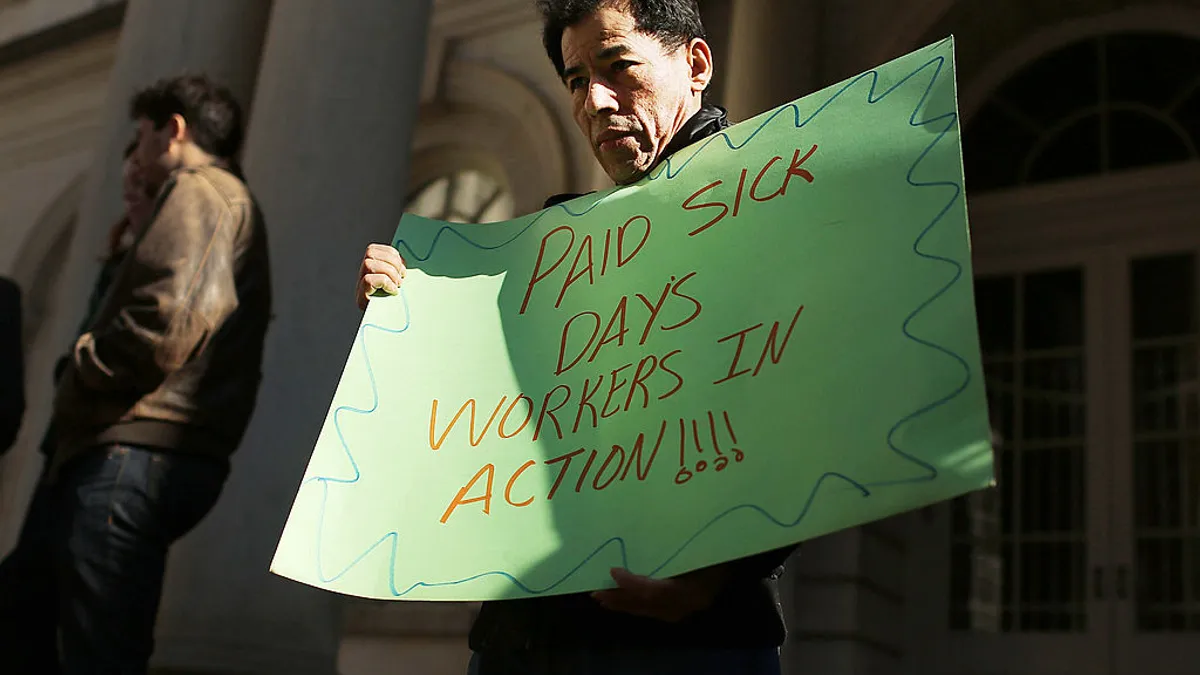Right now, four states, 19 cities and one county across the United States have paid sick time laws on the books, according to abetterbalance.org.
And in a study by the Institute for Health and Social Policy at McGill University, the researchers report that 145 countries offer some type of paid sick leave. Of that number, more than 79 countries provide sickness benefits for at least 26 weeks or until recovery.
The U.S. provides only unpaid leave for serious illnesses through the FMLA, which does not cover all workers.
On Aug. 5th the Associated Press reported that President Barack Obama is considering signing an executive order that would require all federal contractors to offer paid sick leave to their employees. The drafted executive order would require about seven days of paid leave for workers who are sick or caring for sick relatives.
The following day Valerie Jarrett, senior advisor to President Obama and chair of the White House Council on Women and Girls, took to blogging on LinkedIn to announce that the President is calling on Congress to pass the Healthy Families Act, which would allow millions of working Americans to earn up to seven days a year of paid sick time. Approximately 43 million private sector workers don’t have paid sick leave, and more than two-thirds of those workers are in the bottom 25% of earners, Jarrett wrote.
What to prepare for
Paid sick leave has officially become buzzworthy, based on media coverage and White House activity. Sander VanderWerf, vice president in the absence management practice at Aon Hewitt in New York City, says employers should get ready for more of the same, as 24 more states are considering mandated sick leave.
While time away from work when sick is a key benefit to workers, employers who are going to start providing these benefits must understand the implications of the laws as they affect an employer’s current benefit designs, says VanderWerf.
“The larger clients we work with historically have offered paid sick leave benefits,” she says. “With legislators and regulators looking to create opportunities to support their constituents, we expect more employers to find themselves having to offer paid sick leave, so they need to know how the changing compliance landscape can affect them.”
VanderWerf notes that the term “paid leave” doesn’t mean the same thing for everyone. Sometimes, for example, people are talking about vacation. Sick time off is another type of paid leave. And there also is unpaid leave protected under the FMLA.
One positive potential development in navigating the growing, and complicated patchwork, of state and municipal laws would be passage of federal legislation to help consolidate the compliance issue.
In February, the aforementioned Healthy Families Act was reintroduced in the House and Senate. If passed, among other things it will require private sector employers with 15 or more employees to give their workers the ability to earn seven days of paid sick leave a year. Businesses with fewer than 15 employees would be required to give their employees seven unpaid days.
Sen. Patty Murray (D-Wash.) introduced the bill in the Senate, while Rep. Rosa DeLauro (D-Conn.) introduced a companion bill in the House in March.
“Having a federal law would make life easier for most employers,” VanderWerf says.
Potential strategy for a smoother leave program
For now, VanderWerf offers a potential solution for employers when it comes to managing paid leave. Designate a specific number of annual paid personal time off (PTO) days that can be used at the employee’s discretion for whatever reason they might need (illness, vacation, emergency child care, etc.).
“That scenario makes the silos of paid leave disappear,” she says. “It is a single bucket of days that employees have the availability to use consistent with the employer’s policy. There has to be some structure. It makes it much more of an adult situation, in terms of how employees choose to use their PTO days.”
While VenderWerf says the number of employers offering PTO vs. traditional vacation and other paid leave is not huge right now (certain industries, such as healthcare, are early adopters), Aon sees increasing interest in the PTO strategy.
“It’s a trend that will end up being adopted more, but right now many employers are at the exploratory stage,” she says.
VanderWerf says it is critical to tailor that benefit, with a focus on each demographic employee group.
“Paid sick days are very important to employees who have them,” she says. “And Millennials are proving to be even more sensitive to having paid leave in general. They want more flexibility and choice when it comes to their lives. They value those type of benefits.”






















